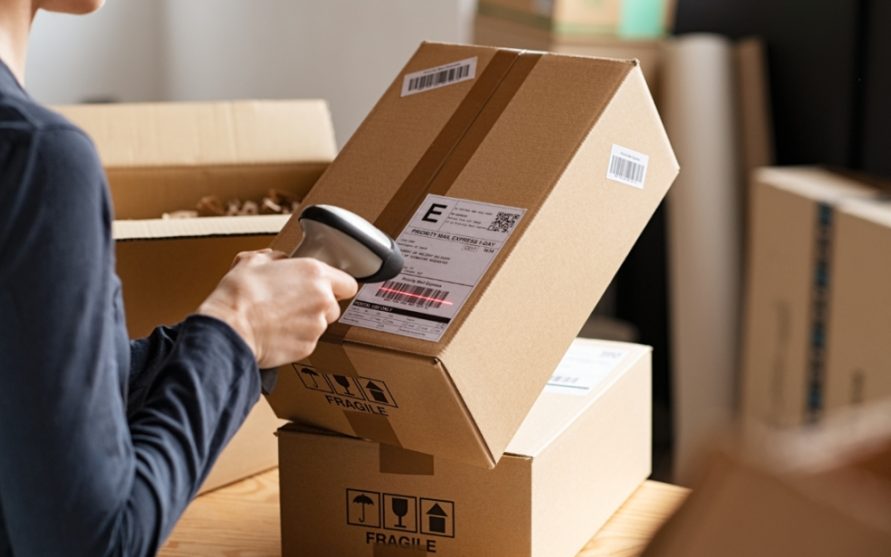Ecommerce Sustainability: 5 Ways to Become More Eco-friendly
01/10/2021 | Share:
Today’s businesses have more economic and moral duties to contend with than during any other time post the industrial revolution. We need to be operating fairly, responsible, and morally; and are observed, monitored, and judged by our capabilities of all three demands.
Never has it been more important for a business to be working sustainably; this means to meet the needs of the company, and the consumer, without compromising the ability of future generations being able to do the same. The concept of sustainability is related to the development of services and products in an eco-friendly way.
By recognising that the environment is an exhaustible resource, the onus is on today’s business owners to protect it as best they can.
One of the biggest industries facing a forced transition into sustainability is fashion. According to a recent study by Vogue, consumers now look at the sustainability of a fashion purchase as a key determinator; this is up from 65% in 2020 to 69% in 2021.
Global business giant, IBM, found that 60% of consumers are keen to change their purchasing habits to reduce their impact on the environment. It was discovered that 80% of consumers cite sustainability as important to them, with 70% happy to pay a higher price for sustainable brands that operate in an environmentally responsible way.
So, how can your ecommerce business operate in a more eco-friendly way? There are several steps to take, and we will look at the top five in this post.
5 Ways to Become More Eco-Friendly
1. Update your Brand Ethos
The rebranding of any element of a brand’s visual identity is insightful, frustrating, stressful, and exciting all at once. This process takes some time to do effectively but is the best place to start with the venture of becoming more eco-friendly.
The first step is to communicate the change to all staff, shareholders, and partners, and for this, it’s essential to have a good narrative. What is the update symbolising, and why should people care? Get your message out there in the usual marketing formats; social media, adverts, blog posts, or email campaigns.
Ensure that you broadcast the changes you’re making to become more sustainable, and include any adaptations you want to complete in the future while indicating your final goal. This could be to reduce your commercial vehicles on the road or to source materials more locally; as long as it has a positive environmental impact, the actual transition matters less.
2. Create a Recycling Policy/Process – Let People Return
Returns are something most business owners dread; they cost money, they’re inconvenient, and a drain on resources. But, return policies can be a huge factor in whether a consumer uses your brand or not, so we’re kind of at a crossroads here. Ecommerce returns have a hugely detrimental impact on the environment, and a sustainable returns policy isn’t easy to implement.
However, it isn’t impossible.
Some strategies can be used to try to reduce the environmental and final impact of returns, with the key elements being:
Product Descriptions: Ensure that your product descriptions are 100% honest; include dimensions, materials, weight, colour, country of origin; basically anything that, if not correct, can lead to a return.
Returns Offer: Although it is essential for ecommerce businesses to offer refunds, they don’t have to be too encouraging; i.e., free returns, or ‘buy more and return what you don’t want,’ should be messages of the past.
Omni-Channel Returns: Look at the most sustainable way to provide a return service; for example, instead of sending a courier to consumers’ homes, instruct consumers to use drop-off points in-stores, where your couriers go weekly to collect all returns at once.
3. Reduce Your Packaging (only use what you need)
There are tremendous pressures on ecommerce businesses to reduce the environmental impact of packaging, satisfy consumers’ preferences, and to comply with government regulations.
It is a legal and moral duty of today’s businesses to minimise environmental waste and improve waste-management services; nothing is a heavier drain on this than packaging, especially single-use packaging.
You can make simple switches, from plastic bubble wrap to shredded cardboard, from unnecessarily large boxes covered in adhesive tape to more appropriately sized boxes secured with string.
4. Use Recycled/Recyclable Materials Wherever You Can
Similar to packaging materials, anywhere you can make a sustainable switch is worth considering. If you can look at the construction processes of your products to see if any materials can be changed or sourced more locally instead of from overseas.
It makes financial sense to reduce your outgoings but looking to purchase recycled materials for your products. They’re cheaper, plentiful, and send a great message to potential consumers who want to make sensible purchasing choices.
Consumers are looking for recycled, biodegradable products, so if you can provide this, then as well as improving your carbon footprint, you’re also increasing your potential market.
5. Resell your Used Merchandise
Any product that’s been returned or previously used can’t simply be resold in the same way it was. But, it can be sold on – as long as you’re honest with your descriptions, to prevent any negative feedback.
The resale economy provides a suitable sustainable option by extending the lifecycle of products and keeping them out of landfills. Consumers can save money by purchasing ‘nearly new’ products, and ecommerce owners can still profit from the item.
Summary
Implementing sustainable practices in your ecommerce business isn’t just good for the environment but could also be hugely positive for your brand reputation and your bottom line. Consumers are changing their habits and opting for eco-friendly options, governments are putting new regulations in place, and the ecommerce market is transitioning to become greener.
No major changes need to be made initially; you can begin with an update of your brand ethos to let consumers know you’re heading in the right direction. Changes can be small, but in today’s climate, they’re essential to make.







